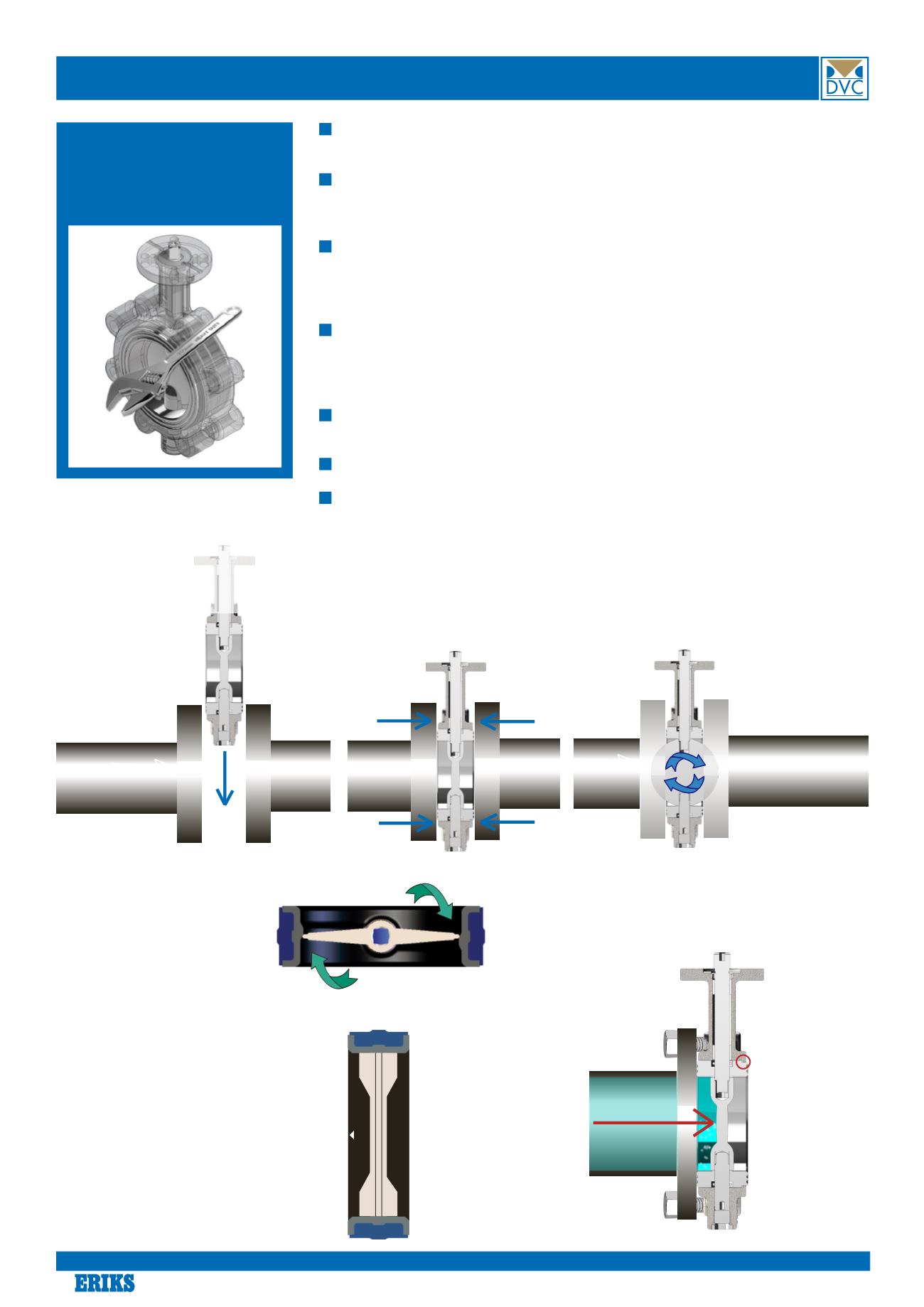
B-2232-UK-09-2013-REV. A
An
Company
Check that the specifications on the identification plate meet the require-
ments regarding pressure, temperature and media.
The piping must have a straight line and the flanges have to be parallel.
Furthermore there must be a distance between the flanges, corresponding
to the face-to-face dimensions of the butterfly valve.
The butterfly valve can be mounted in any direction. However if there are
a lot of dirt particles on the bottom of the pipe, it will be suitable to mount
the stem of the butterfly valve horizontally. This will protect the pivot point
of the disc.
Before commissioning, the pipe work has to be rinsed out to remove dirt
and remnants of welding material, to avoid damage on the liner. During the
rinsing procedure, the butterfly valve has to be positioned as open and may
not be operated, before the rinsing has been completed.
Welding operations may not be performed nearby the butterfly valve, as
welding drops can damage the liner.
Do not use gaskets. The liner works as sealing to the atmosphere.
Where vacuum, high flow rate or water hammering can occur, flanges with-
out a loose collar should be used, to obtain the best conditions.
Installation guide for
Butterfly Valves
Check that the flange covers
the area of the liner.
Afterwards tighten the bolts
on the flange by hand.
Carefully open and close the
valve to check that the disc
centralizes and the disc does not
touch the flange. With the disc
in the open position, tighten
crosswise with a wrench.
Though the valves are constructed
to work as shown on the right,
counter clockwise rotation - CCW
- they can be reversed without
problems. Please consider that the
torque in this case will increase.
As the butterfly valves are
equipped with the unique wave
shaped liner, the operation of the
valves, either free stem, handle or
gear operated, has to follow the
guidelines as shown below.
A small triangular shaped figure is
placed on the liner - this triangle
indicates which way the disc has to
enter the liner.
Generally spoken the disc has to
close clockwise - CW - in order to
have the lowest possible torque -
and thus the longest possible life
time.
Installation guide
Turn disc
CW towards
arrow to
close
Turn 90
°
CW to close
Carefully place the but-
terfly valve between the
flanges, with the disc in
closed position.
2242 LUG, used as an “end of line” valve:
Please notice that the valve is uni-directional.
14
Know-how makes the difference


